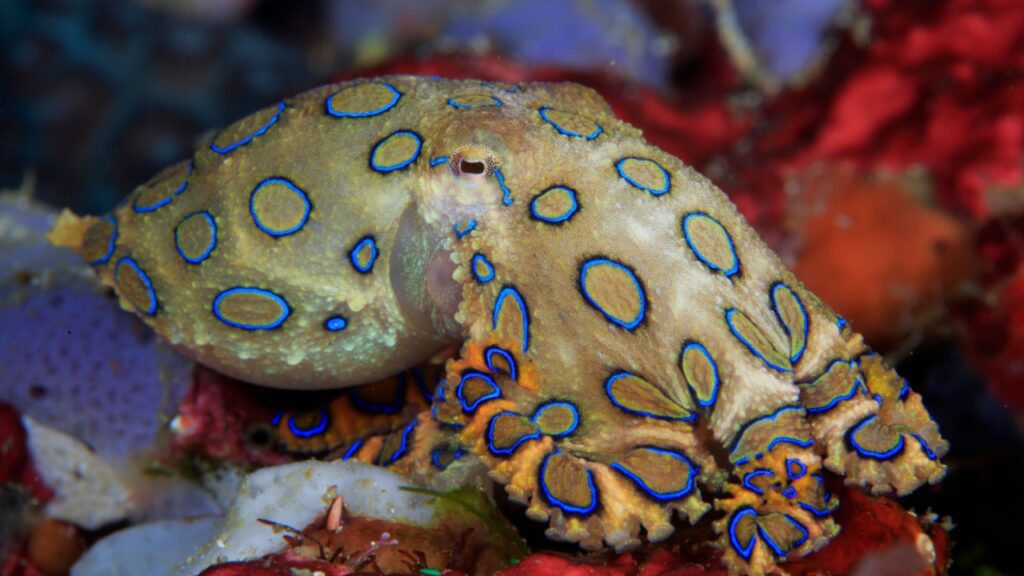When we think of dangerous sea creatures, great white sharks often come to mind first. However, the ocean harbors many other creatures that pose an equal or greater threat to humans. From tiny but deadly jellyfish to massive sea mammals, these marine monsters prove that size isn’t everything when it comes to danger in the deep.
Box Jellyfish
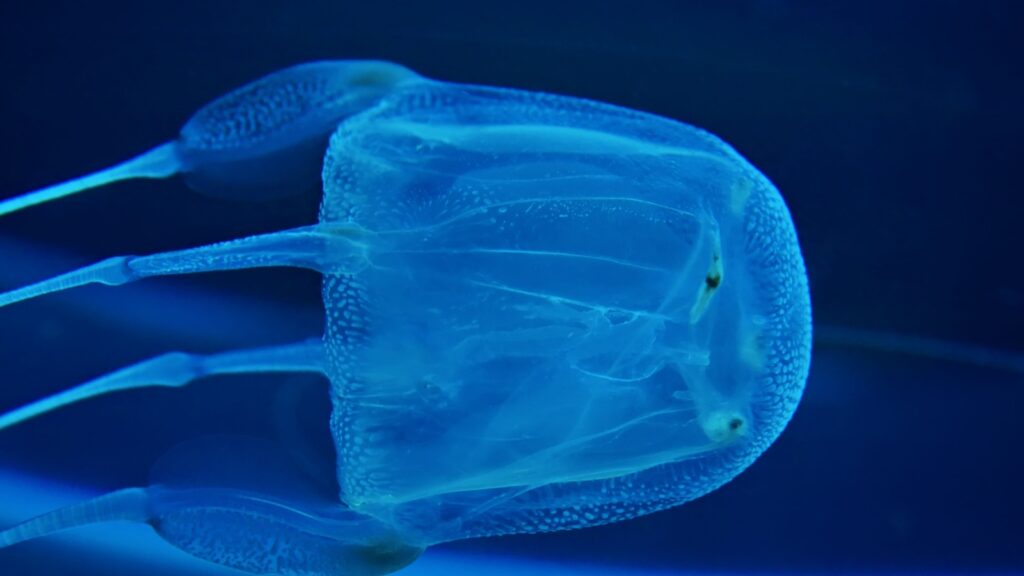
The box jellyfish is arguably the most lethal creature in the ocean. Its venom is so potent that it can kill a human in minutes. These transparent creatures are found in the warm waters of the tropics, particularly around Australia. Their tentacles are covered in tiny stingers that inject venom on contact, causing intense pain and, in severe cases, heart failure.
Blue-Ringed Octopus

Don’t let its small size fool you – the blue-ringed octopus packs a deadly punch. This tiny cephalopod, no bigger than a golf ball, carries enough venom to kill 26 adult humans within minutes. It’s found in tide pools and coral reefs in the Pacific and Indian Oceans. The octopus’s bright blue rings serve as a warning sign, flashing when it feels threatened.
Saltwater Crocodile
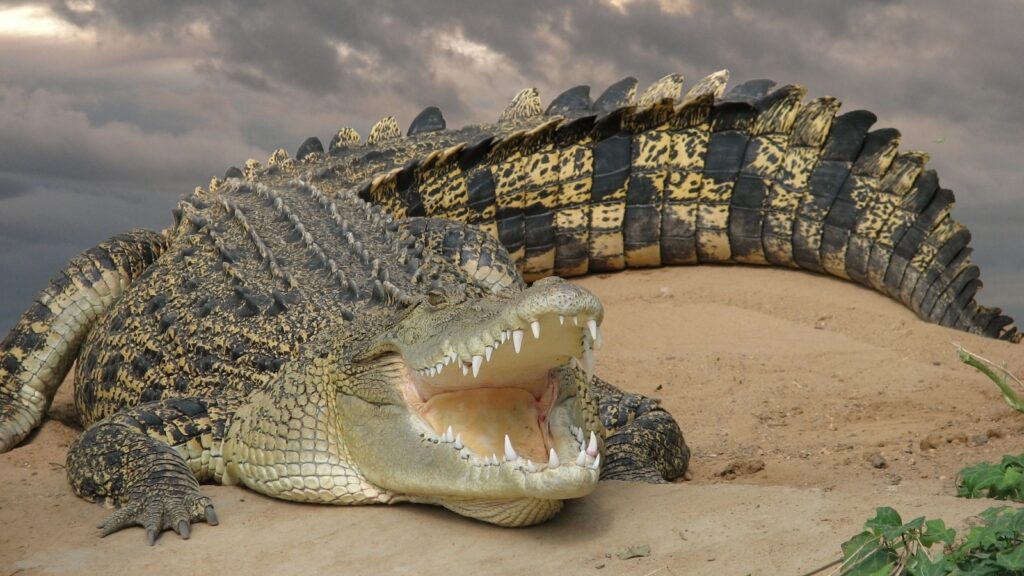
The saltwater crocodile is the largest living reptile and one of the most dangerous creatures in the ocean. These massive predators can grow up to 23 feet long and weigh over a ton. They’re found in the coastal areas of Southeast Asia and Australia. Saltwater crocodiles are known for their aggressive behavior and powerful jaws, which can exert tremendous force.
Stonefish
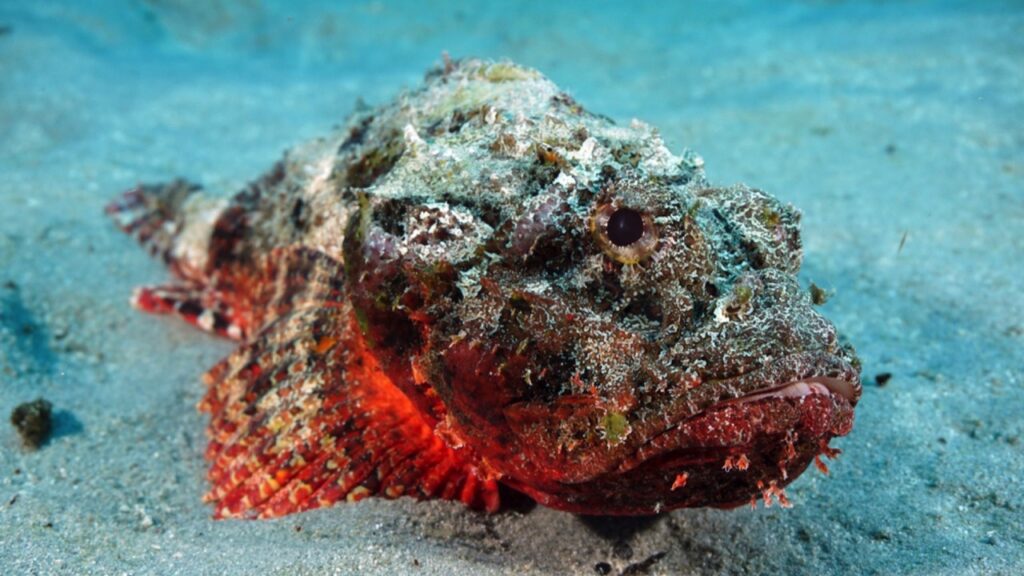
The stonefish is the most venomous fish in the world. As its name suggests, it looks like a stone, making it easy to accidentally step on in shallow waters. Its dorsal fin spines contain a potent neurotoxin that causes extreme pain, swelling, and potentially death if left untreated. Stonefish are found in the coastal regions of the Indo-Pacific.
Cone Snail
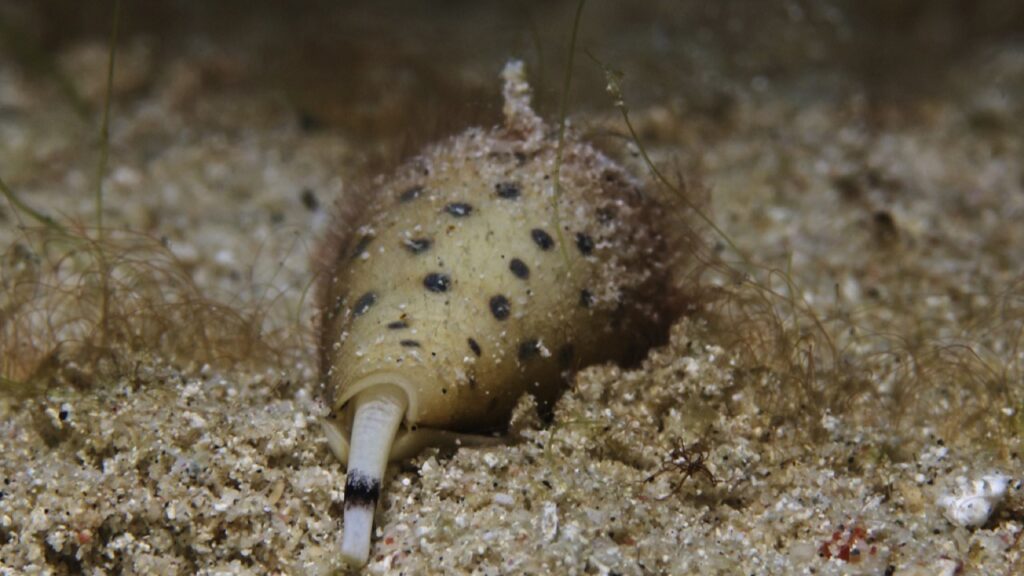
The cone snail might look harmless, but it’s one of the ocean’s deadliest inhabitants. These snails use a harpoon-like tooth to inject venom into their prey – or unsuspecting humans. The venom can cause paralysis and respiratory failure. There’s no antidote, and some species of cone snails have venom potent enough to kill an adult human in under an hour.
Portuguese Man-of-War
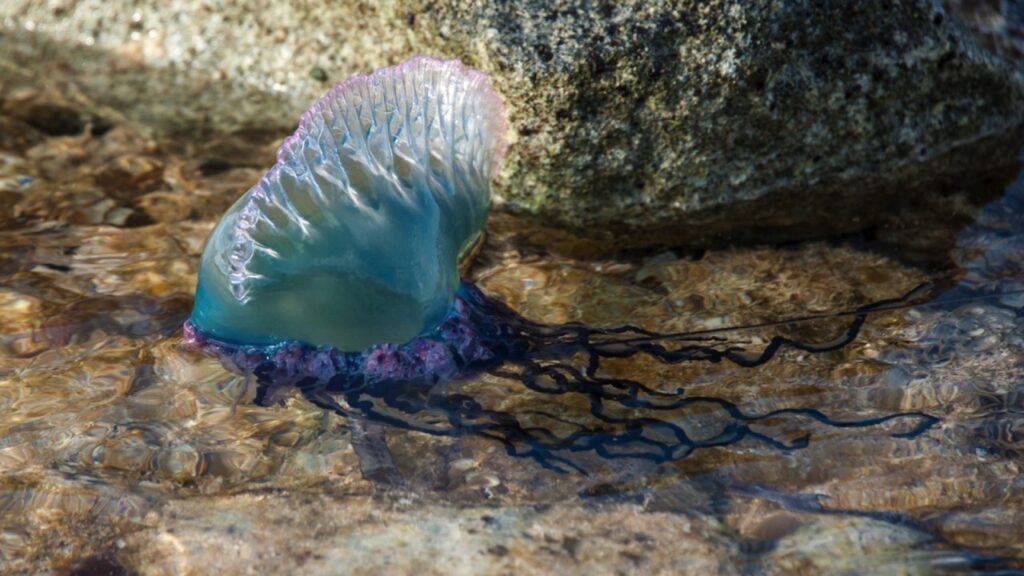
Often mistaken for a jellyfish, the Portuguese man-of-war is actually a colony of organisms working together. Its long tentacles can extend up to 100 feet, delivering a painful sting that can be fatal in rare cases. Even dead specimens washed up on beaches can still sting. These creatures are found in warm waters around the world, often carried by winds and currents.
Lionfish
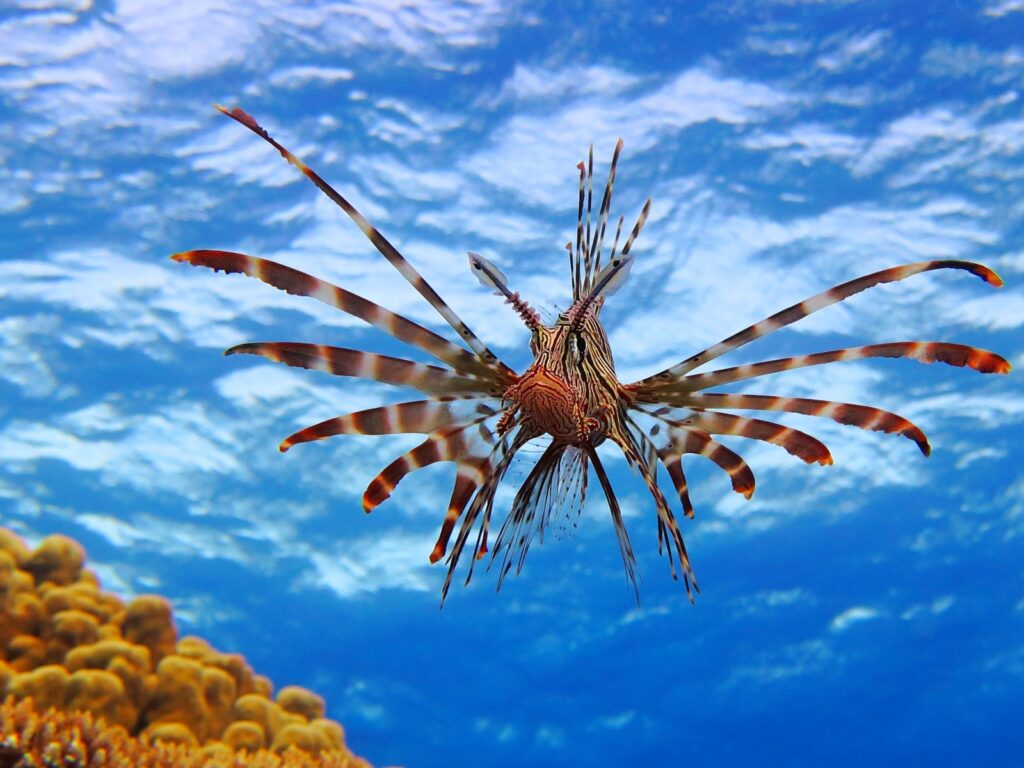
The lionfish is a beautiful but dangerous invader in many parts of the world. Native to the Indo-Pacific, it has spread to the Atlantic and Mediterranean. Its venomous spines can cause intense pain, sweating, and in severe cases, paralysis and heart failure. Lionfish are also devastating to local ecosystems, as they have few natural predators outside their native range.
Blue Whale
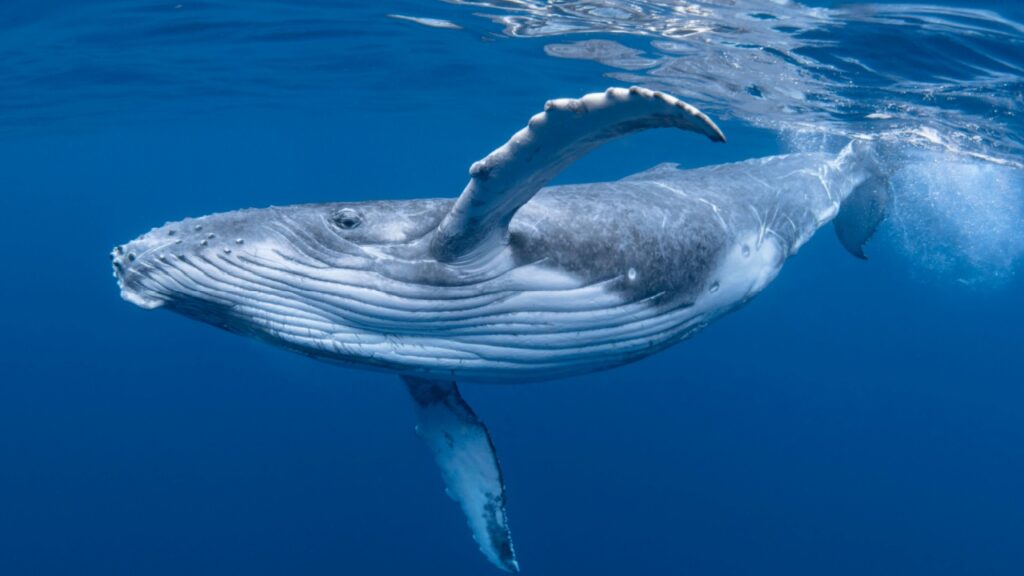
The blue whale, the largest animal on Earth, isn’t typically aggressive towards humans. However, its sheer size makes it potentially lethal. A single accidental swipe from its massive tail could easily crush a boat or a swimmer. Blue whales can grow up to 100 feet long and weigh as much as 200 tons, making any close encounter extremely dangerous.
Irukandji Jellyfish
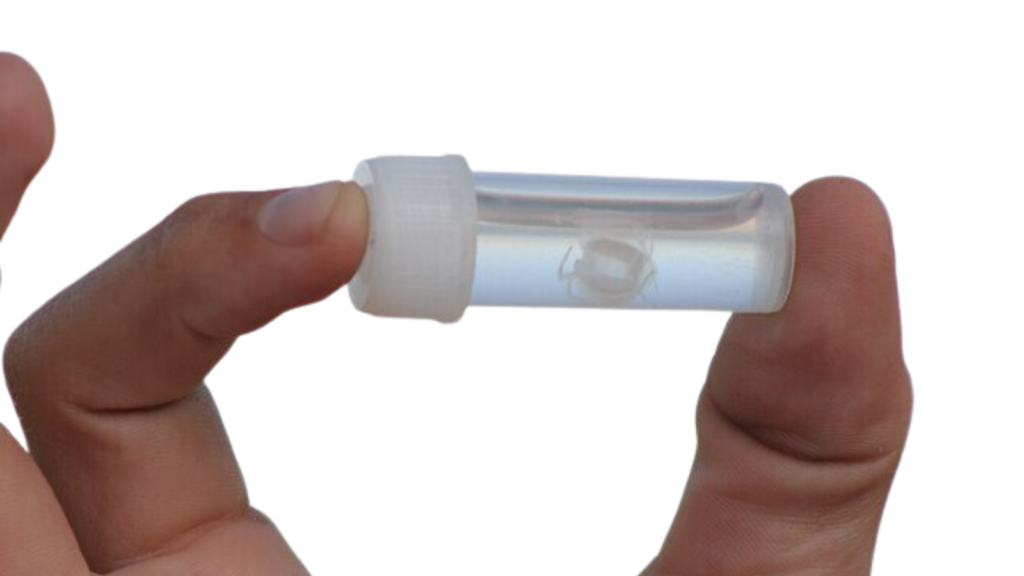
The Irukandji jellyfish is tiny but terrifying. About the size of a fingernail, it’s almost invisible in the water. Its sting causes “Irukandji syndrome,” which can lead to severe pain, vomiting, and potentially fatal brain hemorrhages. Found primarily in northern Australia, these jellyfish are considered one of the most venomous creatures in the world.
Killer Whale (Orca)
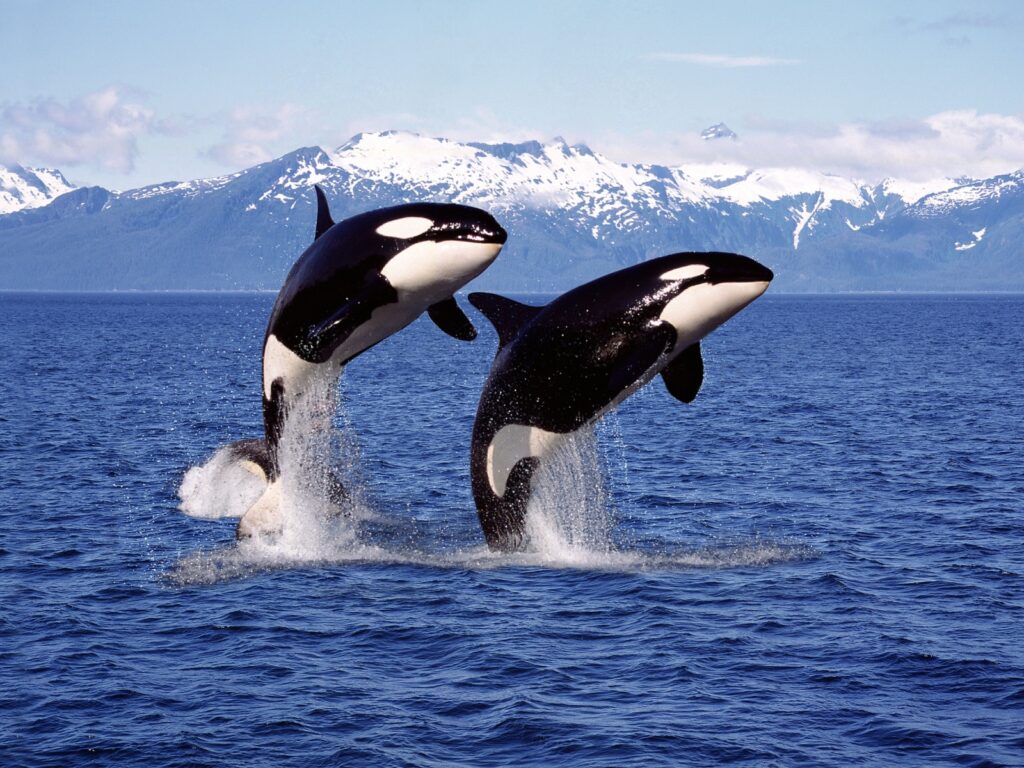
Killer whales, or orcas, are apex predators of the ocean. While attacks on humans in the wild are rare, they are incredibly intelligent and powerful hunters. In captivity, there have been several fatal incidents involving orcas and their trainers. These mammals can grow up to 32 feet long and weigh up to 6 tons, with a bite force strong enough to crush bones.
Leopard Seal
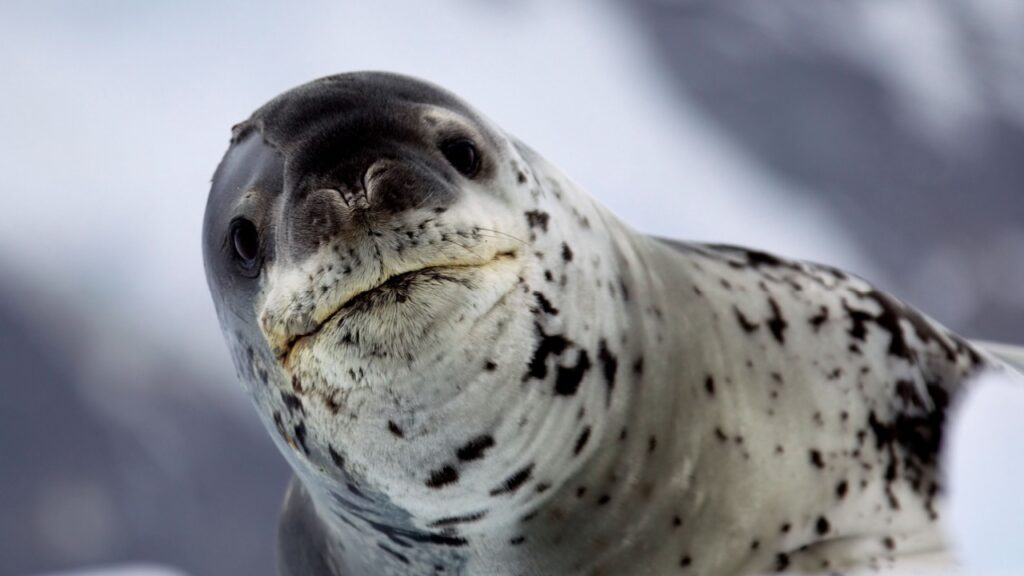
Leopard seals are the second-largest species of seal in the Antarctic. They’re known for their powerful jaws and aggressive hunting behavior. While attacks on humans are rare, they can be extremely dangerous if encountered in the water. Leopard seals have been known to attack small boats and have even killed a human in one documented case.
Giant Pacific Octopus

The giant Pacific octopus is the largest octopus species, with an arm span that can reach up to 14 feet. While not typically aggressive towards humans, it possesses incredible strength and a sharp beak capable of injecting venom. In the unlikely event of an attack, a giant Pacific octopus could potentially overpower and drown a human.
Electric Eel
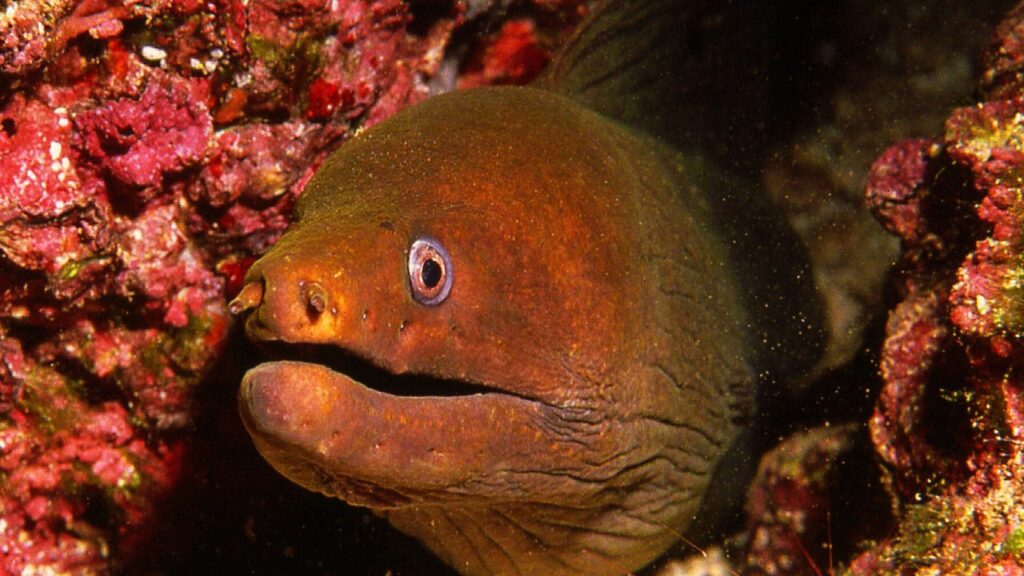
Despite its name, the electric eel is actually a type of knifefish. It can generate electric shocks of up to 860 volts – enough to stun an adult human. While deaths are rare, the shock from an electric eel can cause heart failure or drowning. These creatures are found in the fresh waters of the Amazon and Orinoco basins in South America.
Humboldt Squid
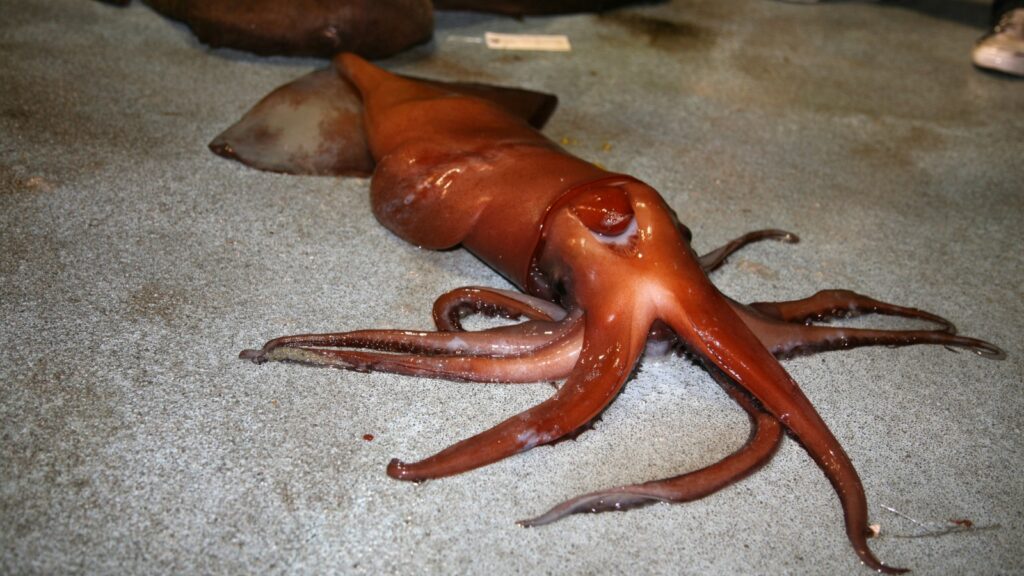
Also known as “red devils,” Humboldt squid can grow up to 6 feet long and travel in groups of up to 1,200. They’re known for their aggressive behavior and have been known to attack divers. Their strong arms are lined with sharp hooks and suckers, and they can quickly strip the flesh from their prey. Humboldt squid are found in the eastern Pacific Ocean.
Needlefish

Needlefish might not seem threatening, but they can be surprisingly dangerous. These slender fish with long, sharp beaks can leap out of the water at high speeds. There have been instances of needlefish impaling humans, sometimes with fatal results. They’re found in tropical and temperate waters around the world.
Becky is a fervent wildlife enthusiast and pet care expert with a diploma in canine nutrition. Her love for animals stretches beyond the domestic, embracing the wild tapestry of global fauna. With over a decade of experience in animal welfare, Becky lends her expertise to OutlandishOwl through insightful articles, captivating wildlife information, and invaluable guidance on pet nutrition. Her work embodies a deep commitment to understanding the intricate lives of animals and a passion for educating others on sustaining natural habitats. Becky's hands-on conservation efforts and her knack for translating complex dietary science into practical pet feeding tips make her an indispensable voice for creatures great and small.

